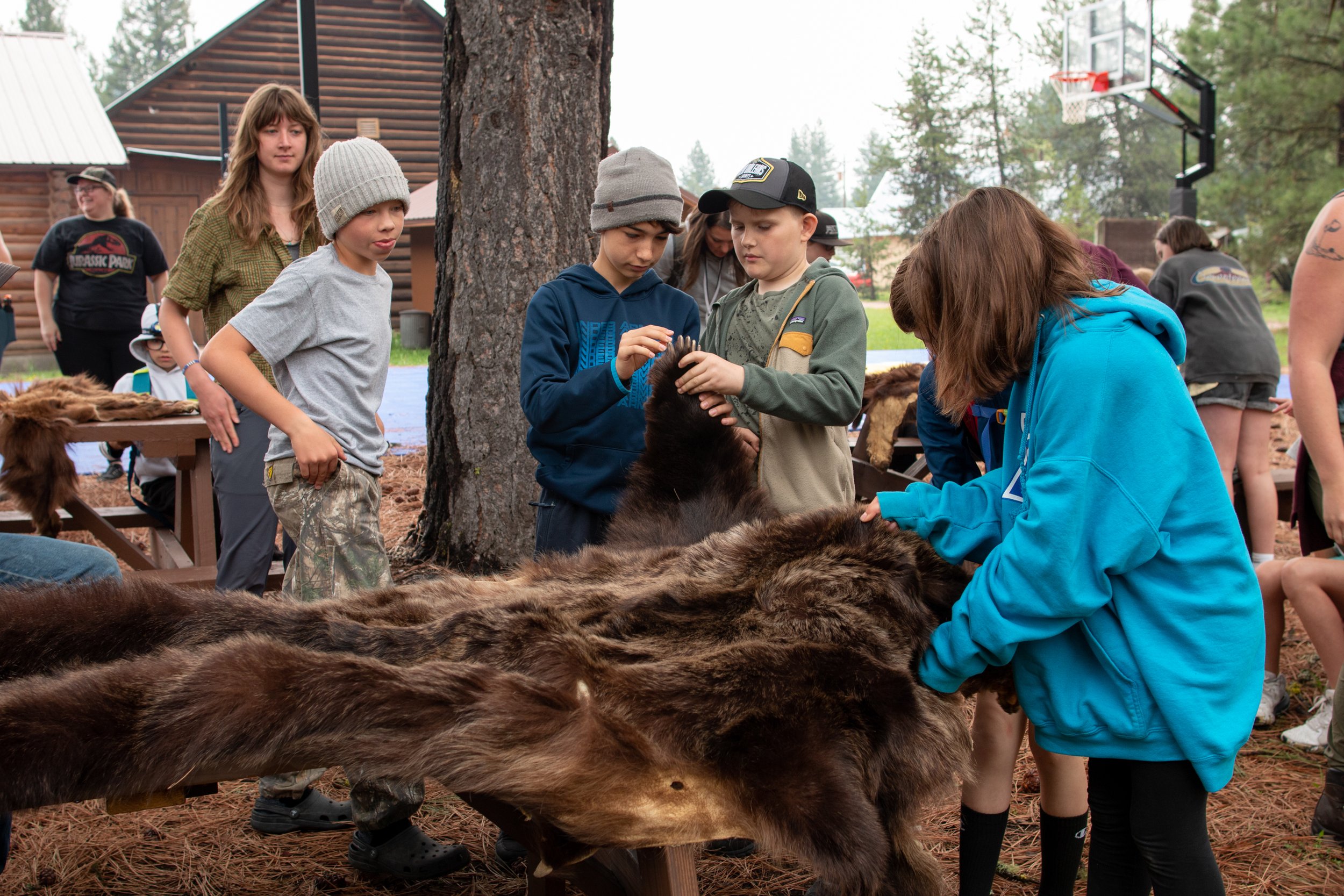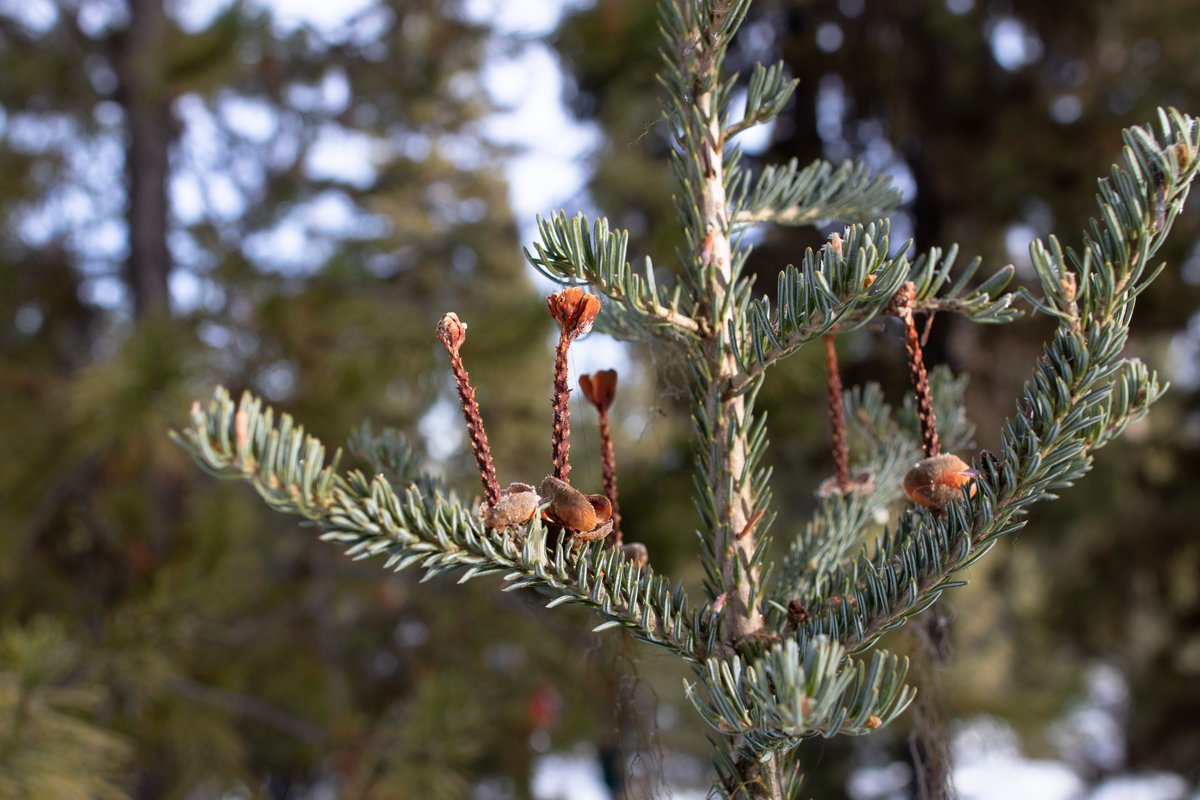
Make This Your Classroom
Bring your class for an unforgettable field experience with our expert instructors. Swan Valley Connections offers tailored outdoor programs for elementary through high school students that encourage curiosity.
The following course descriptions highlight the variety of options we offer. While we typically teach in the Swan Valley, in the landscape we know best, we can also scout sites near your school for a customized experience. Contact us today to begin planning an engaging and memorable experience outside the classroom.
Our Programs
-

Interpreting Animal Sign (year-round)
Animals from insects to elk leave behind fascinating sign of their lives in the forest. Are those tooth marks or claw marks in the bark? Is that an insect home or a spruce cone? Which animal chewed this twig? Which teeth did it use? Join us for an in-depth exploration of animal behavior, life stages, territorial marking, feeding, reproduction and more. We'll take you to one of our remote game cameras to understand the thought that goes into camera placement and to review footage to see what we might have captured in the last days or weeks.
-

Wetland Ecology (fall, spring, summer)
Did you know we have carnivorous plants in the Swan? With more than 4,000 wetlands, the Swan has more wetlands per acre and more rare plant populations than anywhere else in the state. We'll explore the unique beauty of wetland flora, the small vertebrates like voles that hide out in the dense vegetation, as well as fascinating aquatic insects such as the Predaceous Diving Beetle and fearsome dragonfly nymphs. While wetlands seem to have a negative connotation in popular culture, your students will learn to see the beauty and biological complexity of these habitats.
-

The Life Aquatic (fall and summer)
A true appreciation of the lives of aquatic creatures requires underwater exploration. Working in small groups, students embark on an adventure they’ll never forget: snorkeling the Swan River. Safety instruction is followed by an hour floating in shallow, slow-moving water, exploring underwater habitat, native and non-native fish identification and interpretation of fish behavior. Students will come away with a deep physical understanding of river dynamics and the forces that shape fish anatomy and behavior.
-

Snow School (winter only: Dec and Jan)
Explore the physical characteristics of snow that make winter hibernation possible. Study temperature characteristics, depth, density, and water equivalent of snow, as well as snowflake structure. Learn how forest habitat affects snow depth which in turn impacts animal travel, choice of overwintering sites and winter survival. Create a hibernaculum out of snow and test whether it would keep a (model) small mammal alive. Practice the art of snowshoe travel and learn why some animals sink and some float on the snow.
-

Animal Tracking (winter only: Dec and Jan)
Snow is a perfect canvas for the artwork of our winter resident wildlife. Discover the clues in each track that help identify the animal, then theorize about the animal's larger story from anatomical details, patterns in the string of tracks, and other sign left behind. Learn to broadly identify families of wildlife from tracks and trails.
-

Herp Hunting (spring and summer)
"Herps" are the creepy crawlies with backbones: the snakes, salamanders, frogs and toads whose emergence in spring fills our forests and wetlands with scuttling and slithering. Since we have no venomous herps in the Swan, students can hunt, capture and handle the species who call this place home. Learn the best techniques for stalking and netting tadpoles and adults; how to safely handle these fragile organisms; characteristics to aid in identification of eggs, tadpoles, larvae and adults; and the scientific protocol for herp surveys.


